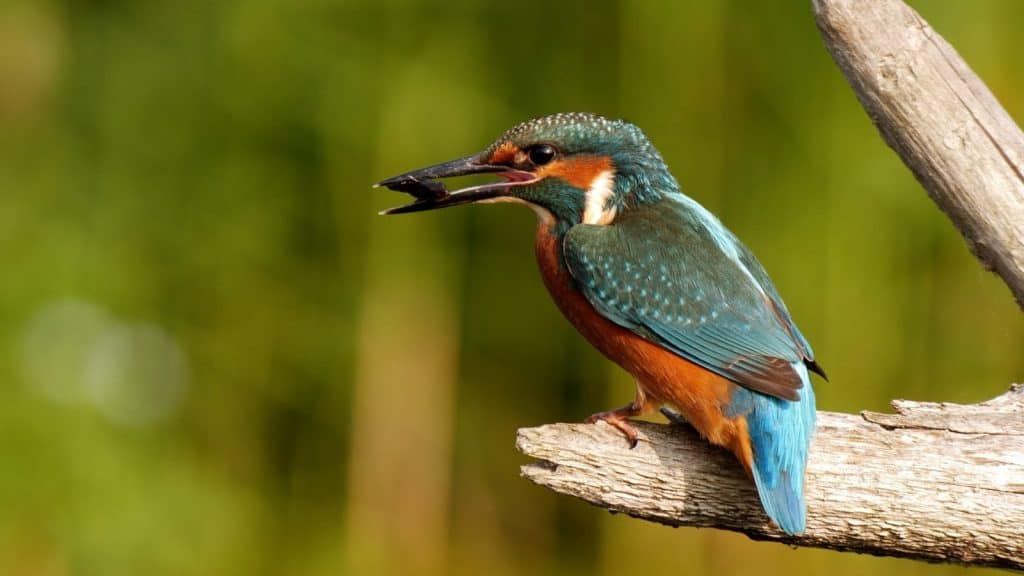With its iridescent colors, the kingfisher is unique in our native fauna. Depending on the sun, its plumage shines from blue to turquoise on its back and from orange to rusty brown on its underside.
But unlike what you might think, its colorful plumage doesn't necessarily make it easier to spot. The colors of the kingfisher perfectly match it to nature. From above he blends with the water and from below with the branch on which he usually sits. I was all the happier that this summer, after a long time, I was able to find a kingfisher territory again.
Brandenburg - A paradise for kingfishers
Kingfishers breed on slow-flowing or stagnant waters with an abundant supply of small fish and perching areas. Fortunately, Brandenburg has many of these. On a Brandenburg river a few weeks ago, I noticed the many potential perches for kingfishers. The river offers a perfect view on the different perches and in addition many possibilities for camouflage.
So I decided to observe the possible territory a little longer. It took about two hours until my suspicion became reality and a whole kingfisher family came around the corner. As if this was not already enough happiness, only minutes later an osprey slammed into the water directly in front of me. His hunting attempt failed and unfortunately so did my shot.
But this beautiful place did not let me go from this point on and I decided to visit the kingfisher more often over the following weeks. To the seats favored by me came as a rule a young kingfisher male.
The sex and age of a kingfisher can be easily identified by its bill. Females, unlike males, have an orange colored lower bill and young birds can be distinguished from adults by a white tip of the bill.

The kingfisher as an indicator for near-natural waters
When I encounter a kingfisher, it is a real feeling of happiness. However, not only because it is so beautiful, but also because its presence proves that the body of water is obviously intact. A kingfisher needs near-natural waters with a healthy ecosystem to find food and breeding places.
However, the kingfisher does not need untouched wilderness. It now also feels at home in some near-natural cities such as Berlin. A pair of kingfishers has already settled in Berlin's Tiergarten park.
The kingfisher I filmed has made itself comfortable in a Brandenburg nature reserve and obviously finds optimal living conditions there. In addition to several kingfishers, I was also able to film a flock of sparrows, a robin and a moorhen there.
A small nutria family also regularly crossed the paths of the kingfishers. Again and again the mother with her young came out of the reeds to feed.
In the last few days I have not found the kingfisher frequently at his previous perch. He has now changed his hunting tactics, since the fish have now moved to deeper waters and are no longer seen so often. I will certainly visit him more often in the course of the year and am curious to see what else I get to see. ?
I hope you like my little movie and you got a good impression of this beautiful place and its animal inhabitants. Otherwise, I am of course happy if you continue to hear from me in the Wildlife Blog be surprised by our native nature.
Many greetings,

PS.: By the way, here you come to my personal Nature film websitewhere you can learn more about me. I wish you continue to have fun in the CareElite Blog!




